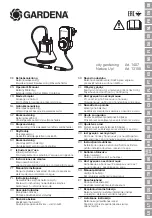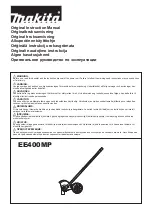
Instructions
µ–Slide VI
0.4
The µ–Slide VI
0.4
is also provided with a Collagen and a
Poly–L–Lysin coated surface. Such an adhesion substrate
has been shown to stimulate the adhesion and growth of
various cell lines in µ–Slides. A high quality Collagen
IV solution (Corning #356233) and Poly–L–Lysin solution
(Sigma #P4832) is used to pre-coat the slides.
Coating your µ–Slide VI
0.4
The uncoated µ–Slide must be coated to promote cell ad-
hesion. If you want to establish a certain coating to match
your needs, we recommend testing your coating proce-
dure on both uncoated and ibiTreat µ–Slides, since we
have observed that some biomolecules adhere differently
to hydrophobic and hydrophilic plastic surfaces.
• Prepare your coating solution according to the man-
ufacturer’s specifications or reference.
• Apply 30 µl and leave at room temperature for at
least 30 minutes.
• Aspirate the solution and wash with the recom-
mended protein dilution buffer.
• Optionally let dry at room temperature. Attention,
some coating proteins might degenerate when dry-
ing!
Further information about coatings is provided in
cation Note 08 Cell culture coating
Tip:
For washing you can add the buffer into one channel
end and simultaneously aspirate it on the other side.
Seeding Cells
• Trypsinize and count cells as usual. Dilute the cell
suspension to the desired concentration. Depending
on your cell type, application of a 3–7 × 10
5
cells/ml
suspension should result in a confluent layer within
2–3 days.
• Apply 30 µl cell suspension into the channel of the
µ–Slide. Quick dispensing helps to avoid trapped air
bubbles.
• Cover reservoirs with the supplied lid. Incubate at
37°C and 5 % CO
2
as usual.
• Await cell attachment in order not to flush out the
cells. Afterwards fill each reservoir with 60 µl cell–
free medium.
Tip:
The day before seeding the cells we recommend plac-
ing the cell medium and the µ–Slide into the incubator
for equilibration. This will prevent the liquid inside
the channel from emerging air bubbles over the incu-
bation time.
Trapped air bubbles can be removed from the channel
by inclining the µ–Slide and knocking at one edge.
Exchanging Medium
Aspirate both reservoirs and fill slowly 120 µl of fresh
medium into one of the reservoirs, which will replace the
channel volume by gravity flow.
Flow Application
Detailed information about flow rates, shear stress, and
shear rates is provided in
on
Suitable Tube Adapter Sets are also available (see page
They consist of a tubing (20 cm) with inner diameter of
1.6 mm and adapters for the connection between the ibidi
µ–Slide (female Luer) and the tubing of the pump in use.
Please contact us for recommended perfusion setups. ibidi
provides a variety of channel slides and pump systems.
Preparation for Cell Microscopy
To analyze your cells, no special preparations are neces-
sary. Cells can be observed live, or fixed directly in the µ–
Slide on an inverted microscope. You can use any fixative
of your choice. The µ–Slide material is compatible with
µ–Slide VI
0.4
Page 2
Version 3.0 (2015-12-10)






















